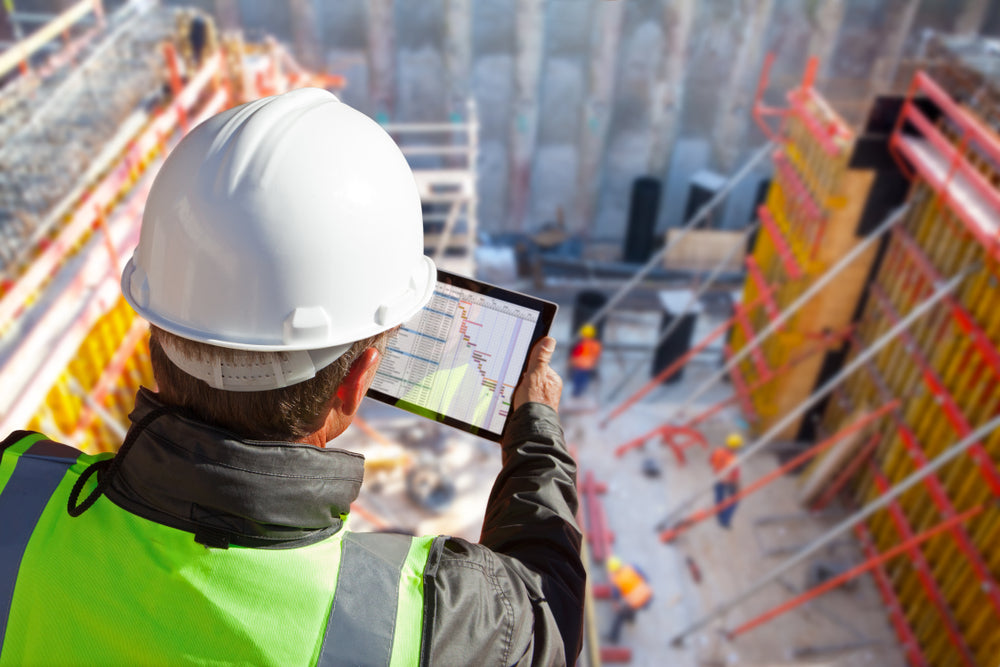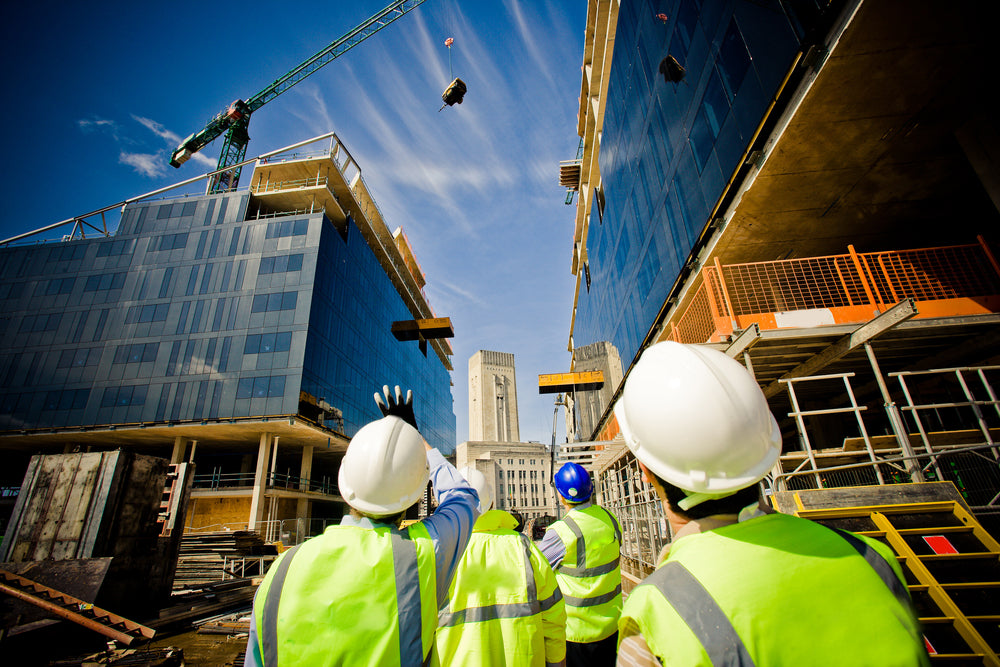The construction industry is embracing technology. Even though it took a while, the industry is set to welcome the technological advances enjoyed by almost every other industry today.
In particular, you’re starting to see less and less of one particular thing on most job sites: paper. The huge blueprints and endless amount of forms and plans are almost a thing of the past. These days, you’re more likely to see the foreman and workers pull out their tablets and smartphones instead.
For any other industry, this would be a no brainer. Just about everything else in every other sector is paperless, with everything being stored online in the cloud, on servers, or local hard drives. But in the construction industry, seeing a tablet on a job site instead of oversized blueprints is nothing short of revolutionary.
Many industries adapt and change with the new technology from year to year. That’s not the case with construction, however. Their systems and processes have remained relatively unchanged since the 1940s.
Think about that for just a minute. Think of any other industry, whether it be retail, manufacturing, anything. Can you imagine it operating today like it did in the 1940s? You can’t because you probably have no idea how they functioned 10 years ago, much less nearly 80 years ago.
Even still, until very recently, the construction industry has remained relatively unchanged. However, realizing that it could save a lot of money - we’re talking in the trillions - if it started to invest in IT, the construction industry has finally started embracing technology.
They’re utilizing things like artificial intelligence, cloud-based data analytics, mobile computing, and automation to drive efficiency and boost margins. The industry is even using drones to collect information in locations that are hard for humans to access.
However, there is one technology that is set to really revolutionize the construction industry if they really embrace it. I’m talking about augmented reality, a technology that is a complete game changer.
What Is Augmented Reality?

Augmented reality, or AR, is the cousin of virtual reality. Although it might not be as fun as skydiving in virtual reality, AR is carving out its own space as a handy tool in our everyday lives. AR is used in everything from social media filters to surgical procedures, and it may soon take over the construction industry as well.
What AR does is take elements of the virtual world and bring them into your real world, enhancing the things you see, hear, and feel. The technical definition of augmented reality is, “An enhanced version of reality where live direct or indirect views of real-world physical environments are augmented with superimposed computer-generated images over a user’s view of the real-world, thus enhancing one’s current perception of reality.”
In other words, you look at a scene through a screen and experience computer-generated images, sounds, and even touch feedback placed within the real world.
So augmented isn’t creating an entirely new reality like virtual reality is. Instead, it enhances our actual world. The word “augment” means to add to or enhance something. In the case of augmented reality, it is adding graphics, sounds, and touch feedback into your natural world to create an improved experience.
If you heard anything about the Pokemon Go craze a few years back, you knew about or heard about augmented reality. Pokemon Go let people view the real world through their smartphone cameras while projecting things onscreen such as icons, score, and Pokemon creatures as overlays that made them seem as if those items were right in front of you. Pokemon Go is an excellent example of augmented reality.
For a simple explanation of augmented reality, watch this video:
How Does Augmented Reality Work?

There are three basic augmented technologies in use today.
SLAM (Simultaneous Localization and Mapping)
SLAM is the most effective way to render virtual images over real-world objects. It simultaneously localizes sensors concerning their surroundings, while at the same time mapping the structure of the environment. SLAM looks to solve complex AR simulation problems and isn’t a specific algorithm or software. The SLAM system is actually a set of algorithms that aim to solve simultaneous and localization mapping problems.
Recognition Based
Recognition or marker-based AR uses cameras to identify visual markers or objects, such as QR codes and NFT markers, to showcase an overlay when the device senses the marker. Recognition based AR relies on the camera to distinguish a marker from other real-world objects.
The marker image, as well as its position and orientation, can be calculated. Once the marker is recognized, it’s replaced with a virtual 3D version of the corresponding object. This allows the user to observe the object in greater detail and from a variety of angles. Rotating the marker rotates the virtual representation of it as well.
Location Based
Unlike recognition based, location-based, also known as markerless, augmented reality relies on GPS, a digital compass, velocity meter, or accelerometer to provide data about the location and the augmented reality visualizations that are activated based on the inputs. Location-based is becoming increasingly popular because the location detection features in smartphones make it easy to leverage this type of AR technology. Typical uses of location-based AR are mapping directions, finding nearby services, along with other location-centric mobile apps.
How Will AR Be Used In Construction?

Now you’re probably wondering how AR will be utilized in the construction industry. Right now there are countless ways that AR can be used in the industry, most of which we aren't even aware of. But as of today, AR can have an immediate impact in five ways.
Improving The Accuracy Of Construction Projects
Accuracy is critical in all construction projects because better accuracy means you’ve wasted less money and time due to adjustments you have to make along the way. Before the project is even executed, AR will provide you with a walkthrough of the entire project, including specific details and exact measurements.
Architects, project managers, and engineers will get the data they need to ensure accuracy as well as speed. AR will also allow them to navigate each piece of every projects’ phase to see any errors before they surface during the build.
Saving Time And Money
As we touched on above, time and money are the most valuable resources on any construction project. Augmented reality will allow construction companies to save a lot of both. A fundamental way AR will save companies money is by eliminating the need for new architecture plans, which are very expensive and time-consuming. Instead of getting new plans, you can just modify your 3D models and virtual plans before construction begins.
Project Management
The real-time visualizations with AR take all the guesswork out of the picture because there is no longer a need to rely on manually recorded measurements or drawings. AR will display accurate images, re-creating entire spaces. As a result, planning and managing projects will become much more efficient and save time for the whole team. Architects and designers can also turn their client's visions into AR models right before their eyes.
Design Analysis
With AR, project managers will be able to accurately analyze the design because they can walk through the entire project and correct any errors with just a few taps of the screen. Plus, they can add or take away anything they need on the spot. AR will eliminate any and all guesswork that has plagued construction sites in the past. Typically, inspections of this kind only took place after the building's construction, when the tiniest mistake could cost the company thousands of dollars.
The Actual Construction
AR will accelerate construction processes by allowing team members to have quick and instant access to virtual models of the project. Companies will also be able to benefit from prefabricated components or parts that can be built based off of the virtual models. The smooth and streamlined processes will save companies time and money and will create the potential of projects finishing early rather than late, which is the current norm.
Augmented Reality And Construction Safety

Perhaps the most significant benefit of bringing augmented reality technology into the construction industry is its potential to improve workplace safety. More specifically, it will enhance the safety training process.
Imagine having all the risks and safe operating procedures for the use of any type of equipment appear on your employee's smartphone as he moves it over the equipment. Or the power to see manuals, instructions, and tips as they pass their smartphone over the equipment. That’s what augmented reality can do for construction companies.
For the actual safety training, it would put the equipment in the hands of trainees as helpful training media is superimposed over the physical world. There’s no substitute for learning on the spot, using quality tools. AR combines the effectiveness of real tools and equipment for training, with the helpfulness of creatives designed to enhance the learning experience.
AR will provide real-time access to all workers on any construction site regarding the equipment they are working with any time during the day. Along with benefiting new workers and trainees, it can also be a massive asset for isolated or remote workers.
Change Is Coming
Although it’s taken nearly a century, the construction industry is on the verge of significant changes. With its recent acceptance of new technologies, the construction industry is set to be completely revolutionized. Augmented reality stands to be a major player in that revolution. You will still see the guys in the hard hats and bright vests, but instead of bundles of paperwork, they will be carrying around smartphones and tablets.

